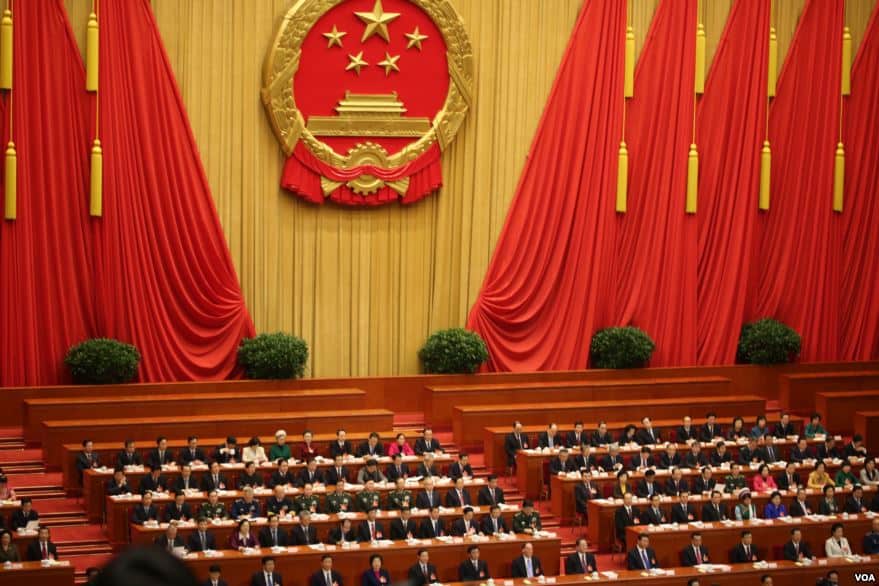A series of meetings held by China’s top financial authorities held immediately following the 100th Anniversary of the Chinese Communist Party (CCP) on 1 July have sent a slew of signals on regulatory focal points for the near future.
The People’s Bank of China (PBOC), the China Banking and Insurance Regulatory Commission (CBIRC) and the China Securities Regulatory Commission (CSRC) recently each held their own special study sessions on the “Spirit of 1 July Speeches,” shedding light on their near-term regulatory plans.
State-owned media said that the meetings focused in particular upon areas including “the prevention and dissolution of financial risk, financial support for micro-and-small private enterprises and green finance.”
Financial Risk Prevention
With regard to financial risk, PBOC said it would “continually strengthen and improve financial macro-adjustments and controls, perennially prevent and dissolve financial risk, and deepen financial supply-side structural reforms.”
CBIRC said that it would “effectively seize the dissolution of outstanding risk and the prevention of increases in risk, and effectively balance the relationship between growth and risk-prevention,” as well as “firmly guard the base line against the onset of systemic financial risk.”
CSRC said that it would comprehensively implement a “zero tolerance policy,” as well as drive improvements to securities enforcement mechanisms, and engage in the innovation of regtech methods.
CSRC will also “comprehensively implement requirements for the prevention of risk; accelerate improvements to risk prevention, early warning, disposal and accountability mechanisms,” as well as “firmly prevent the disorderly expansion of capital” and “prevent a minority of people from using capital markets for illegal wealth creation.”
The Q3 “Chinese Economy and Financial Outlook Report” (中国经济金融展望报告) released by Bank of China (BOC) indicates that potential risk areas requiring attention include:
- Changes to the Federal Reserve’s monetary policy, which could lead to capital outflows form emerging markets and major drops in exchange rates, putting pressure on Chinese capital flows and the renminbi exchange rate.
- Ongoing gains in commodities prices.
- Overheating in real estate transactions.
- Ongoing rises in credit risk.
As of the end of the first quarter of 2021 China’s macro-leverage ratio stood at 267.8%, for a decline of 2.3 percentage points compared to the end of 2020. The non-performing loan ratio of Chinese commercial banks was 1.8%, for a decline of 0.4 percentage points over the same period.
Financial Inclusion and Financial Inclusion
PBOC said that it would “expand financial support for key areas including private enterprises and macro and small-enterprises; rural village revitalisation and green, low-carbon (development).”
The Chinese central bank has unveiled a slew of measures to support green finance since the start of 2021, following the launch of ambitious carbon mitigation targets by Beijing last year which include achieving peak carbon by 2030 and carbon neutrality by 2060.
PBOC’s measures have included:
- The “Three Main Functions” and “Five Big Pillars” (“三大功能”、“五大支柱”) of green financial development policy in March 2021.
- The release of the “Green Bond Support Catalogue (2021 Edition)” (绿色债券支持项目目录(2021年版)) in April, to unify standards and definitions for green financial instruments in China.
- The “Banking Sector Financial Institution Green Finance Assessment Plan” (银行业金融机构绿色金融评价方案), stepping up the importance of green finance measures during regulatory as well as internal assessments of Chinese banks.
With regard to financial inclusion, CBIRC called for “driving the strengthening of new development conditions for financial services and establishing systemic mechanisms for finance to effectively support the real economy.”
PBOC data indicates that as of the end of the first quarter of 2021 the financial inclusion micro-and-small enterprise loan balance stood at 16.7 trillion yuan, for a YoY rise of 34.3%, and an acceleration of four percentage points compared to the start of the year.
The number of micro-and-small businesses that received support from financial inclusion loans was 35.27 million, for a YoY rise of 26.6%.




